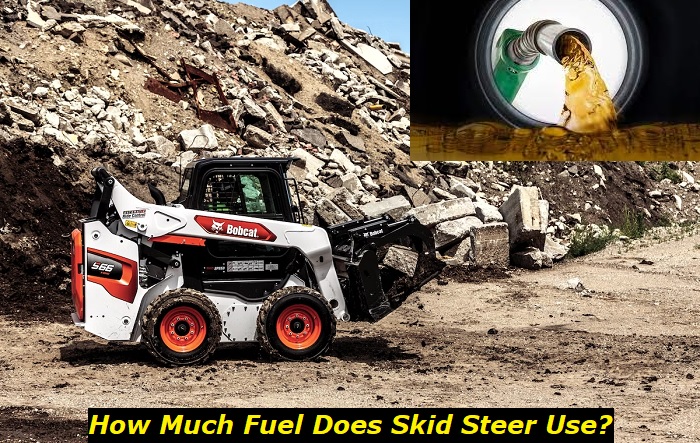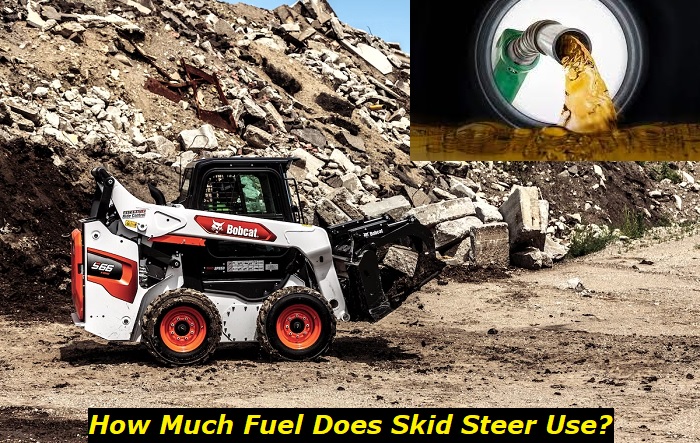Looking to learn about the fuel efficiency of skid steers? Well, you’ve come to the right place! Skid steers are incredibly versatile machines used in construction and agriculture, and understanding their fuel efficiency is crucial for budgeting and productivity. So, let’s dive in and explore just how efficient these powerhouses are!
When it comes to fuel efficiency, skid steers vary depending on factors like engine type, load capacity, and operating conditions. But fear not, we’ll break it down for you in simple terms, so you can easily grasp the concept. Whether you’re a budding engineer or just a curious mind, we’ll provide insights that’ll make your learning experience engaging and enjoyable.
So, sit back, relax, and get ready to unravel the mysteries of skid steer fuel efficiency. From the basics to advanced insights, we’ll be your guide on this journey. Get ready to boost your knowledge and impress your friends with fun facts about skid steers and their fuel efficiency! Let’s get started!

The Fuel Efficiency of Skid Steers: A Comprehensive Guide
Skid steers are versatile machines commonly used in construction, landscaping, and agriculture. They are known for their compact size and maneuverability, making them ideal for tight spaces. However, one important factor to consider when using skid steers is their fuel efficiency. In this article, we will explore the various aspects of fuel efficiency in skid steers, discussing their impact on operations, benefits, tips for improving fuel efficiency, and more. So, let’s dive into the world of skid steer fuel efficiency!
The Importance of Fuel Efficiency in Skid Steers
Fuel efficiency plays a crucial role in the overall performance and cost-effectiveness of skid steers. These machines consume a significant amount of fuel during operation, and inefficient fuel usage can lead to increased expenses and downtime. By optimizing fuel efficiency, operators can minimize fuel costs, reduce environmental impact, and extend the working hours of their skid steers.
There are several factors that affect the fuel efficiency of skid steers. One of the most significant factors is the engine type and size. Skid steers are typically powered by either diesel or gas engines, with diesel engines being more fuel-efficient. Modern skid steers are equipped with advanced engine technologies, such as direct injection and variable speed controls, further enhancing their fuel efficiency.
Another factor that influences fuel efficiency is the weight and design of the skid steer. Lighter machines tend to consume less fuel, as they require less power to operate. Additionally, skid steers with efficient hydraulic systems and low-friction components can also contribute to improved fuel efficiency. Regular maintenance, including filter replacements and fluid checks, is essential to ensure optimal performance and fuel economy.
The Benefits of Fuel Efficient Skid Steers
Investing in fuel-efficient skid steers can bring numerous benefits to operators and businesses alike. Let’s explore some of the key advantages:
1. Cost Savings: Fuel-efficient skid steers consume less fuel, resulting in lower operating costs over time. This translates to significant savings for businesses, especially those that rely heavily on skid steers for their operations.
2. Extended Working Hours: With improved fuel efficiency, skid steers can operate for longer periods without the need for frequent refueling. This allows operators to maximize their productivity and complete projects more efficiently.
3. Reduced Environmental Impact: Fuel-efficient skid steers contribute to a greener and more sustainable working environment. By minimizing fuel consumption, operators can reduce their carbon footprint and help combat climate change.
4. Enhanced Performance: Skid steers with excellent fuel efficiency often come with advanced engine technologies that not only save fuel but also improve overall performance. This can lead to increased productivity, smoother operation, and better maneuverability.
Tips for Improving Skid Steer Fuel Efficiency
Now that we understand the importance and benefits of fuel efficiency in skid steers, let’s explore some practical tips to help improve fuel consumption:
1. Proper Equipment Selection: When choosing a skid steer, opt for models with fuel-efficient engines and features like idle shutdown and auto engine idle, which further optimize fuel consumption.
2. Optimize Equipment Usage: Plan and organize tasks efficiently to minimize idle time and unnecessary movements. By optimizing workflow and utilizing the skid steer effectively, fuel consumption can be reduced.
3. Regular Maintenance: Follow the manufacturer’s recommended maintenance schedule to keep the skid steer in optimal condition. This includes regular engine tune-ups, air filter replacements, and hydraulic system checks.
4. Monitor Fuel Consumption: Keep track of fuel usage and identify any patterns or anomalies. This can help identify areas for improvement and adjust operations accordingly.
5. Operator Training: Provide proper training to skid steer operators to ensure they are aware of the machine’s fuel efficiency features and best practices. Educated operators are more likely to operate the equipment efficiently, leading to improved fuel economy.
In conclusion, understanding and optimizing fuel efficiency in skid steers is crucial for both financial and environmental reasons. By considering factors like engine type, weight, design, and maintenance, skid steer operators can reap the benefits of reduced fuel costs, extended working hours, and a smaller carbon footprint. Implementing the tips mentioned above can further enhance fuel efficiency and overall operational performance. So, make fuel efficiency a top priority when utilizing skid steers to maximize productivity and minimize expenses.
Key Takeaways: What’s the Fuel Efficiency of Skid Steers?
- Skid steers have varying fuel efficiency rates.
- The fuel efficiency of skid steers depends on factors like engine size, load capacity, and operating conditions.
- Newer skid steer models tend to have better fuel efficiency due to advanced technology.
- Regular maintenance and proper operation can improve fuel efficiency.
- Choosing the right attachment and using it efficiently can also affect fuel consumption.
Frequently Asked Questions
When it comes to the fuel efficiency of skid steers, there are several important factors to consider. Here are some commonly asked questions about skid steer fuel efficiency and their answers:
1. How can I improve the fuel efficiency of my skid steer?
To improve the fuel efficiency of your skid steer, there are a few steps you can take. First, make sure your machine is properly maintained, including regular oil changes and filter replacements. Additionally, using the right type of fuel can make a difference – check your manufacturer’s guidelines for the recommended fuel grade. Another way to save on fuel is to avoid unnecessary idling. Shutting off the engine when not in use can help conserve fuel and reduce emissions. Lastly, operating your skid steer at lower speeds and avoiding aggressive acceleration can also improve fuel efficiency.
Overall, practicing good maintenance, fuel choices, and conscious operation can go a long way in improving the fuel efficiency of your skid steer.
2. What is the typical fuel consumption of a skid steer?
The typical fuel consumption of a skid steer can vary depending on several factors, including the model, engine size, operating conditions, and the tasks being performed. On average, a skid steer can consume approximately 2 to 4 gallons of fuel per hour. However, it’s important to note that this is just a general estimate and it can vary significantly. The fuel consumption can increase when the machine is operating under heavy loads or in demanding conditions.
It’s always recommended to refer to the manufacturer’s specifications and guidelines for accurate information on the fuel consumption of a specific skid steer model.
3. Are there any fuel-efficient skid steer models available?
Yes, there are fuel-efficient skid steer models available in the market. Many manufacturers are now producing skid steers with advanced technologies and features designed to improve fuel efficiency. These models may have engine enhancements, such as electronic fuel injection or advanced combustion systems, which optimize fuel consumption. Some skid steers also offer eco-friendly modes that automatically adjust engine performance to conserve fuel.
However, it’s important to note that the fuel efficiency of a skid steer can also depend on how it is operated and maintained. Even with a fuel-efficient model, using good operating practices and proper maintenance can further enhance fuel efficiency.
4. Can skid steer attachments affect fuel efficiency?
Yes, skid steer attachments can have an impact on fuel efficiency. Different attachments can add weight to the machine, which can increase fuel consumption, especially when operating under heavy loads. Additionally, certain attachments may require more power to operate, which can also affect fuel efficiency.
It’s important to consider the weight and power requirements of attachments when choosing the right combination for your skid steer. Selecting lightweight and efficient attachments, and using them only when necessary, can help optimize fuel efficiency.
5. How does the terrain affect the fuel efficiency of a skid steer?
The terrain can have an impact on the fuel efficiency of a skid steer. Operating on rough or uneven terrain can increase resistance, which requires more power and fuel to overcome. Additionally, if the terrain is steep or sloped, the skid steer may need to work harder, consuming more fuel in the process.
To improve fuel efficiency on challenging terrains, it’s important to choose the right tires and tracks for your skid steer. Opting for options that provide better traction and stability can help reduce fuel consumption. Additionally, adapting your operating techniques to the specific terrain can also contribute to better fuel efficiency.
Fuel-efficient diesel-powered Remote Skidsteer
Summary
Skid steer fuel efficiency is important because it affects costs and the environment. There are a few factors that influence fuel efficiency, including the engine size and operating conditions. It’s best to choose a skid steer with a smaller engine and to avoid idling for long periods of time. Regular maintenance and using the correct fuel can also improve fuel efficiency. By making smart choices and taking proper care, skid steers can be more fuel efficient and better for everyone.
So, to sum it up, fuel efficiency of skid steers is influenced by factors like engine size and operating conditions. By choosing a smaller engine, avoiding too much idling, and doing regular maintenance, skid steers can be more fuel efficient and eco-friendly.

